Playgrounds in the 1970s were a wild, wonderful, and sometimes perilous experience. They were built tough, with metal slides that could fry an egg in the summer and jungle gyms that might as well have been military training courses. We climbed, swung, and jumped off things with reckless abandon, and somehow, most of us made it out with just a few scrapes and bruises. Parents weren’t hovering, and if you fell, you were expected to dust yourself off and keep playing. Safety standards? They were more of a suggestion than a rule, and we embraced the risks as part of the fun. Today’s playgrounds are a different world, covered in rubber padding and surrounded by liability concerns, but we still remember the thrill of those high-flying, slightly dangerous days. Let’s take a trip down memory lane with these 14 playground activities from the ’70s that would be considered unsafe today.
1. The Giant Metal Slide That Burned Like the Sun
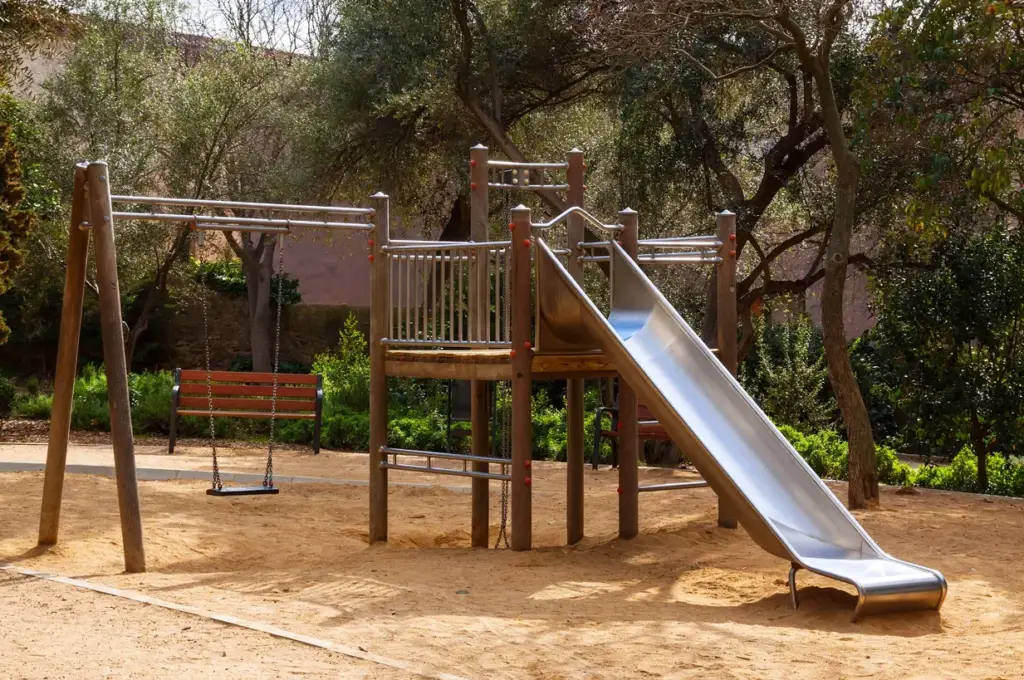
If you grew up in the 1970s, you probably remember those towering metal slides that seemed to reach the sky. They were built from sheets of shiny steel, absorbing the summer heat until they were practically sizzling. Kids would line up, ready to fly down at lightning speed, only to let out a yelp as their bare legs made contact with the burning hot surface. If you were lucky, you had pants on, but if not, you’d be doing a funny little hop-walk at the bottom, rubbing your scorched thighs. Worse yet, the slides were often set at angles that felt dangerously steep, sending kids flying off the end with no soft landing in sight. Many a child miscalculated the landing, tumbling onto packed dirt, asphalt, or—if you were lucky—grass. If someone was slow getting up at the bottom, the next kid coming down wasn’t stopping, and pileups were inevitable.
Despite the risks, the thrill of zipping down a giant slide made it one of the best parts of any playground. Parents never thought twice about the hazards, and there was no such thing as a “slow” way to descend. Today, slides are shorter, made of plastic, and often covered with canopies to prevent burns. They’ve also been given gentler slopes, so kids don’t pick up quite as much speed. While modern designs prevent injuries, they also take away the daredevil excitement we once lived for. There was something magical about conquering that blazing-hot slide, and the scars on our legs were badges of honor. The risk factor made it all the more fun, and we’d ride it over and over again, no matter how much it hurt.
2. The Whirling Mayhem of the Metal Merry-Go-Round
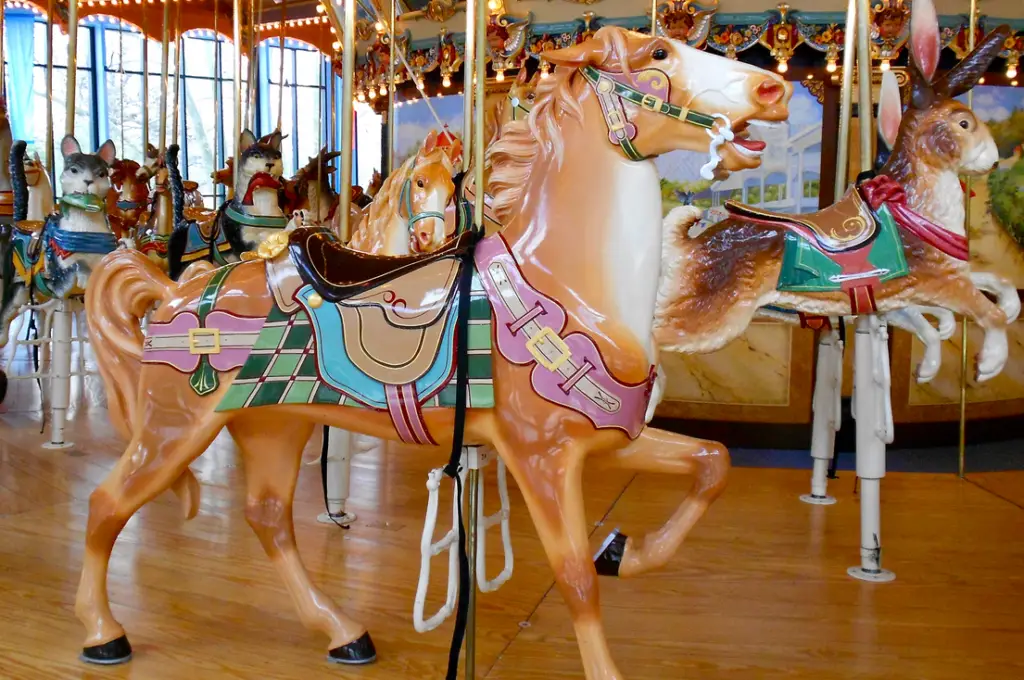
The metal merry-go-round was a spinning disc of chaos that could send kids flying like rag dolls. One kid would hold onto the bars while running as fast as possible to get it going, then leap on before it spun out of reach. If you were lucky, you found a good grip, but if not, you were flung off into the dirt, tumbling like a cartoon character. The truly daring kids hung onto the bars with their bodies stretched outward, defying gravity as the centrifugal force tried to rip them away. And heaven help you if you got dizzy—jumping off mid-spin was a guaranteed wipeout. Some kids learned the hard way that if you crawled on while it was still moving, you risked getting your hands or feet caught underneath.
The merry-go-rounds of the ’70s were heavy-duty, solid metal contraptions that never slowed down unless you dragged your feet. There were no speed controls or safety brakes, just pure, unchecked motion. Today, most playgrounds have removed them entirely, as they were responsible for countless broken bones, chipped teeth, and head injuries. The ones that still exist have been slowed down considerably, often with built-in resistance that prevents them from reaching the thrilling speeds we once loved. Sure, they’re safer, but they’ve also lost their magic. The joy of hanging on for dear life, spinning until you couldn’t walk straight, and daring each other to go faster was something special. It was risky, sure, but wasn’t that part of the fun?
3. The Death-Defying Jungle Gym
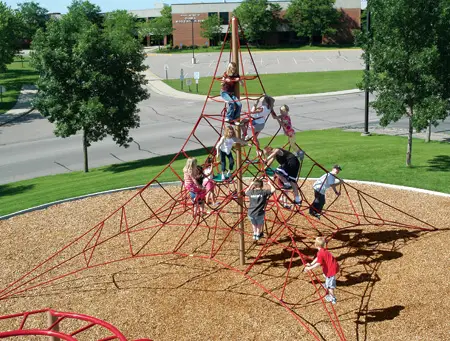
Jungle gyms in the 1970s were massive steel structures that looked like they belonged on a military obstacle course. They weren’t designed for gentle play—they were meant to be climbed, swung from, and sometimes leaped off. These towering metal grids reached heights that would make today’s parents gasp, and kids had no problem scrambling to the very top. If you slipped, you were in for a hard landing because the ground beneath was usually solid dirt, concrete, or, if you were really lucky, wood chips. Sometimes kids would hang upside down from the highest bars, daring gravity to take its best shot.
Despite the ever-present danger, jungle gyms were a rite of passage. You had to prove your bravery by making it to the top, and if you fell, you just brushed yourself off and climbed again. Today’s versions are much lower to the ground and surrounded by rubberized flooring to soften the impact. They also have carefully spaced bars to prevent kids from getting stuck or slipping through. While this makes them safer, it also removes the wild adventure they once offered. Conquering a towering jungle gym felt like a true achievement, and the view from the top was unbeatable. The risks were real, but so was the sense of triumph when you finally made it.
4. The See-Saw Smackdowns
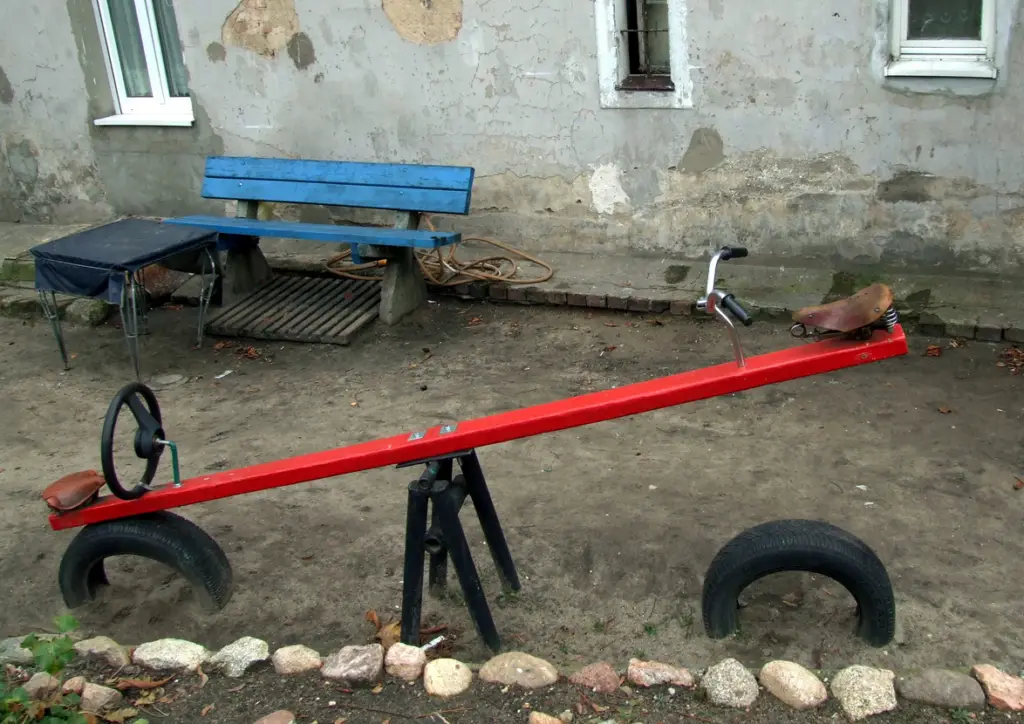
See-saws in the 1970s weren’t the gentle, controlled versions you see today. They were long wooden planks balanced on a metal fulcrum, and if you weren’t careful, you could launch someone into orbit. The real fun came when one kid jumped off unexpectedly, sending the other crashing to the ground with a painful jolt. If you were the smaller kid, you might dangle helplessly in the air while the bigger kid laughed at your predicament. Some kids figured out how to bounce their end just enough to make their friend’s landing extra rough. And then there were the daredevils who stood on them, using their body weight to push the see-saw to even more extreme heights.
As dangerous as they were, see-saws were a playground staple. They required teamwork, trust, and sometimes a little revenge if your friend had just sent you crashing down. Today’s see-saws have built-in springs or rubber stoppers to prevent hard landings, and many playgrounds have removed them altogether. They may have been risky, but they also taught us an important lesson in balance—both physical and social. If you played dirty, you’d get payback soon enough. There was a thrill in the unpredictability of a see-saw ride, and nothing quite matched the feeling of soaring high into the air with just a friend’s strength keeping you aloft.
5. The Unforgiving Monkey Bars
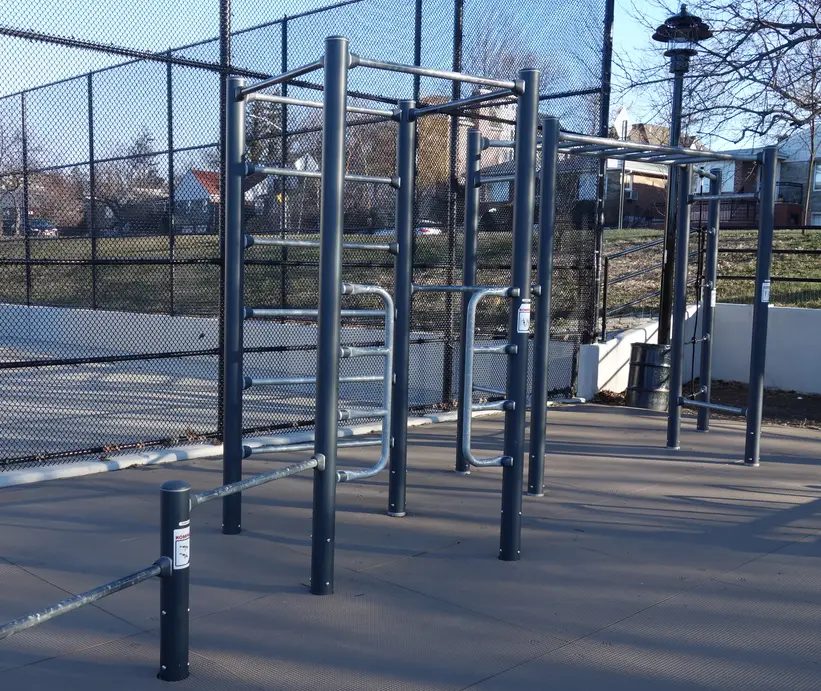
Monkey bars in the 1970s were built high, sturdy, and completely unforgiving. They were often constructed from thick metal bars that got scalding hot in the summer, but that never stopped kids from swinging across like mini gymnasts. The challenge was to get from one end to the other without falling, and for those who dared, skipping bars or trying to swing one-handed was a badge of honor. The biggest risk? If you lost your grip, you plummeted straight down onto hard-packed dirt or asphalt. A bruised tailbone or a sprained wrist was just part of the game, and nobody expected sympathy.
Despite the dangers, monkey bars were an essential test of strength and determination. Kids would practice endlessly, trying to perfect their swinging technique, and races across the bars were a daily occurrence. Today’s playgrounds feature lower, safer versions with soft rubber surfacing underneath, drastically reducing the chances of injury. Some have been replaced altogether with structures designed for gentler climbing instead of daring swings. While this certainly prevents a few broken arms, it also takes away the exhilarating challenge we all embraced. Mastering the monkey bars was a childhood rite of passage, and nothing quite compared to the triumph of making it across unscathed.
6. The Dizzying Thrill of the Tire Swing
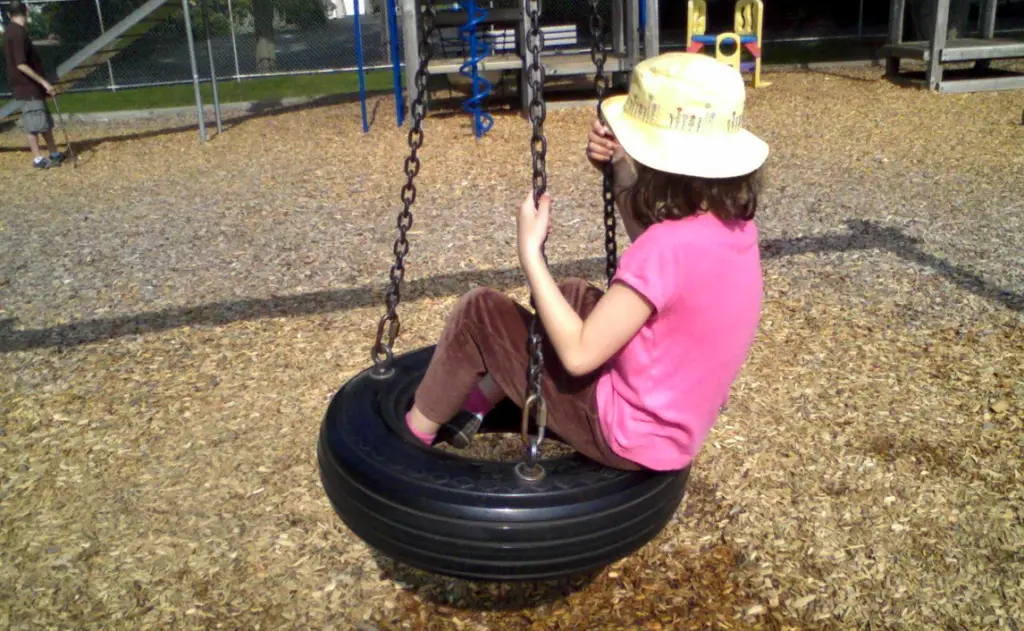
The tire swing was a spinning, swinging, stomach-churning masterpiece of playground fun. It was usually a repurposed car tire, hung from a thick metal chain, and kids could pile onto it, twisting and spinning until dizziness took over. The best part? Having someone push you as hard as they could, sending the whole thing into an uncontrollable spiral. If you weren’t careful, you might get launched off mid-spin, landing flat on your back, winded but laughing. And if you got stuck in the middle of a high-speed spin, you just had to hold on for dear life and hope for the best.
Tire swings weren’t just fun—they were also a test of endurance. Could you handle the constant spinning without getting sick? Could you hold on tight when someone gave an unexpected shove? Today, they’ve largely disappeared from playgrounds due to concerns about injury and entrapment hazards. The few that remain are typically mounted in ways that limit their range of motion, taking away much of the wild unpredictability that made them exciting. We may have ended up dizzy, bruised, and occasionally nauseous, but the joy of a tire swing ride was worth every risk.
7. The Concrete Pipe Crawl Spaces

Some playgrounds in the 1970s featured giant concrete drainage pipes repurposed as crawl spaces and tunnels. These massive pipes were placed directly on the ground, and kids would run through them, climb on top of them, and sometimes even play hide-and-seek inside. On a hot day, they became stiflingly warm, and in the winter, they were ice-cold. If you tripped inside one, there was nothing but hard concrete waiting to meet you. And climbing on top was a whole different challenge—one wrong step, and you were tumbling onto the unforgiving ground below.
Despite the potential for skinned knees and bruised elbows, these pipes were some of the coolest play structures around. They sparked creativity, becoming castles, forts, or secret hideouts in whatever adventure kids dreamed up. Today, playground tunnels are made from soft plastic, designed with smooth edges and safety in mind. While they eliminate the risks, they also take away the rugged, industrial charm of those old concrete tubes. There was something special about crawling through those dark, echoing spaces, knowing that if you weren’t careful, you’d come out the other end with a few battle scars.
8. The Rope Climbing Nets That Felt Like Boot Camp
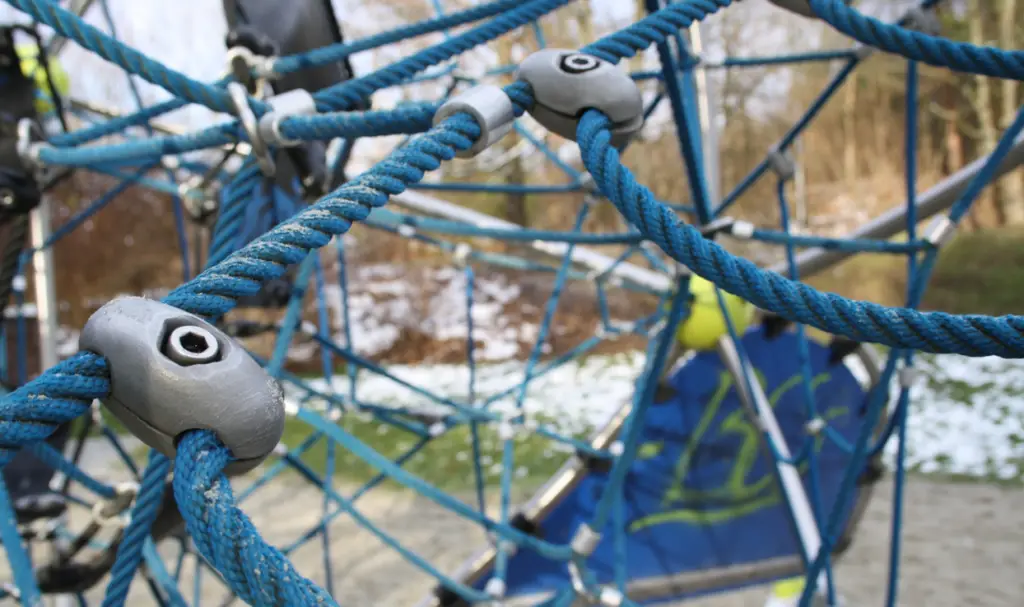
Some playgrounds in the ’70s had massive rope climbing nets that looked like something out of an army training course. These towering nets stretched high into the air, challenging kids to climb to the top without slipping through the gaps. Unlike the carefully spaced, tightly woven climbing structures of today, these nets had wide openings that made it easy to lose your footing. If you weren’t careful, you could fall right through, bouncing off the ropes on the way down before landing hard on the ground. And once you got to the top, the only way down was either carefully climbing back down or taking the quick route—jumping.
Even with the risks, kids loved the challenge of conquering these giant nets. They tested balance, grip strength, and fearlessness, and the reward for reaching the top was an unbeatable view of the playground below. Today’s climbing structures are much safer, with tighter netting, shorter heights, and soft padding underneath. While they’re great for preventing injuries, they don’t quite capture the thrill of those old-school rope climbs. The sense of accomplishment from making it to the top was something special, and the risks made it all the more exciting.
9. The Free-Fall Thrill of Jumping Off the Swing
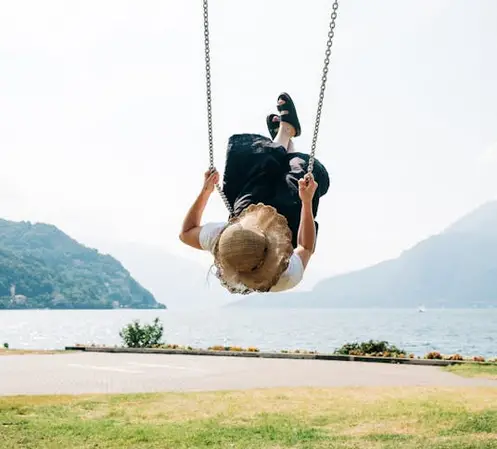
Every kid in the ’70s knew that a swing wasn’t just for sitting—it was for launching. The higher you pumped your legs, the greater the height you reached, and the real fun came when you decided to jump off at full speed. Timing was everything. If you let go too early, you landed short, usually on your feet if you were lucky. But if you waited too long, you risked hitting the ground hard or even rolling into another piece of playground equipment. Some kids would try mid-air tricks, flipping or twisting before landing, adding an extra layer of danger to the game.
Swing jumps were an everyday playground thrill, and we all had our favorite launching spots. Some swings were set up over grass, making for a softer landing, but others were directly over asphalt or packed dirt, where a miscalculated jump could mean serious scrapes. Today, swings are built lower, and many playgrounds discourage jumping altogether, citing safety concerns. While it makes sense to prevent injuries, it also removes the thrill that made swinging so exciting. The rush of wind, the moment of free fall, and the triumphant landing (or wipeout) were all part of the fun.
10. The Balance Beam Battles

Some playgrounds had balance beams that weren’t just for walking across—they were for duels. Kids would challenge each other to see who could stay on the beam the longest, shoving, bumping, and doing anything short of outright tackling to knock their opponent off. It was all about balance, agility, and a little bit of strategy. If you could feint one way and make your opponent overcorrect, you had the upper hand. And when someone lost, they didn’t just step off gracefully—they went tumbling into the dirt.
These balance battles weren’t just fun; they built coordination and friendly competition. Today’s balance beams are lower to the ground and often surrounded by soft padding, making falls less dramatic. Many playgrounds have even done away with them entirely, worried about liability concerns. But there was something exhilarating about facing off against your friends in a battle of wits and balance. The occasional fall was just part of the game, and if you hit the ground, you got up, dusted yourself off, and challenged someone else.
11. The Treacherous Wooden Play Structures
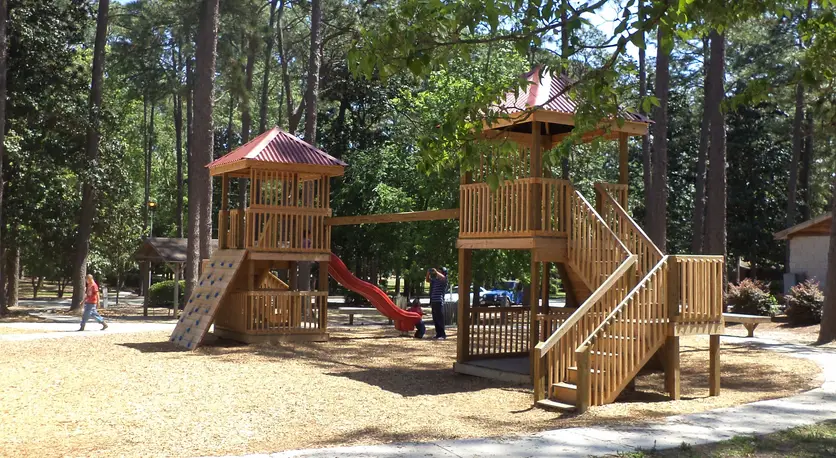
Back in the 1970s, playgrounds often featured towering wooden play structures that were equal parts thrilling and hazardous. These massive constructions were made of thick wooden beams, complete with splinter-filled railings and wobbly ladders that required real skill to navigate. The wood wasn’t always sanded down perfectly, meaning grabbing onto the wrong beam could leave you with a painful surprise. And if it rained? Forget about it—those wooden platforms turned into slick, treacherous surfaces where one wrong step could send you tumbling down. There were no safety rails or gentle inclines, just steep drops that dared you to climb higher.
Despite the dangers, these wooden structures fueled some of the best imaginative play. They became pirate ships, castles, and secret hideouts, inspiring hours of adventure. The sense of height and danger only made them more exciting, and conquering the top felt like a real victory. Today, most wooden play structures have been replaced with plastic, carefully designed with safety in mind. The risk of splinters, falls, and collapsing beams has been eliminated, but so has the rough-and-tumble charm. Back then, a few scrapes and bruises were the price of admission to the best play sessions, and we wouldn’t have had it any other way.
12. The Infamous Hard Metal Swing Set
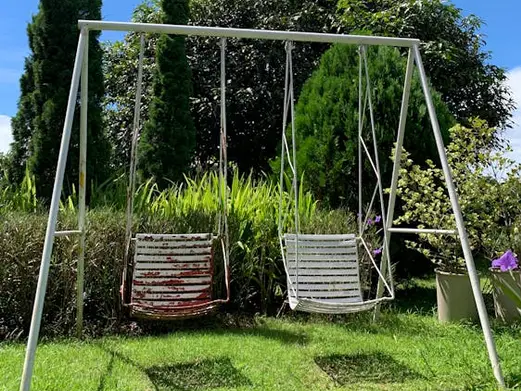
The swings of the ’70s weren’t just for gentle rocking back and forth—they were for high-flying stunts and competitive daredevilry. These sets were made from heavy-duty metal frames, often cemented directly into the ground with exposed bolts and hard-packed dirt beneath. The chains were thick, the seats were hard, and the goal was simple: see how high you could go without flipping the entire structure. If multiple kids got going at once, the entire set would rock and groan, sometimes even lifting slightly from the ground. And if you let go at the wrong time, you were in for a rough landing, possibly rolling right into another piece of equipment.
Swings weren’t just about soaring high—they were also about speed and coordination. Kids would double up, twisting the chains together and then releasing them to spin wildly in circles, testing who could handle the dizzying motion the longest. Today’s swings are much safer, with softer rubber seats, lower heights, and deep, cushioned mulch or rubber padding below. Many modern playgrounds have even banned standing or jumping off swings altogether. Sure, we had our fair share of wipeouts, but there was no better feeling than hitting that perfect arc where it felt like you were flying.
13. The Death Trap That Was the Chain Climbing Ladder
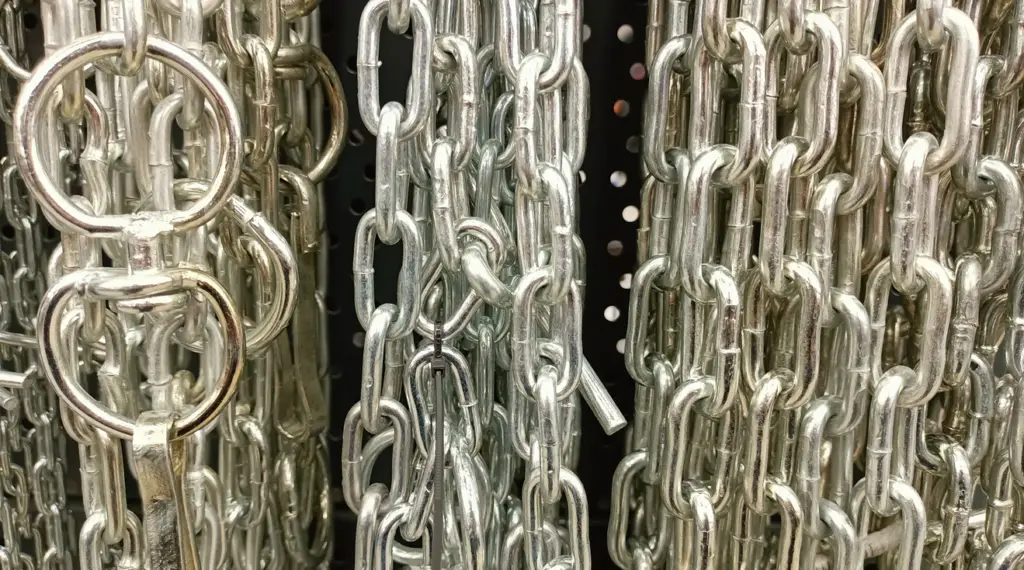
The chain climbing ladder was a terrifying test of strength, balance, and sheer bravery. Unlike solid ladders, this one wobbled unpredictably, shifting with every step and making each climb a gamble. The metal chains were heavy, often covered in rust, and left imprints on your hands after a long climb. Once you made it to the top, you had to carefully transition onto a play structure, which was a challenge in itself. If you missed a step or lost your grip, you were in for a painful fall, usually onto rock-hard dirt or asphalt.
Despite the obvious risks, kids loved the chain ladder because it wasn’t easy. Making it to the top without slipping was a genuine achievement, and there was no greater feeling than proving your skills in front of your friends. Today, chain ladders are much less common, and the few that remain are built with extra supports and safety features to prevent major falls. While that’s great for injury prevention, it also takes away the raw, unfiltered challenge that made climbing them so satisfying. There was an element of real risk, but that’s what made it exciting.
14. The Rolling Log of Doom
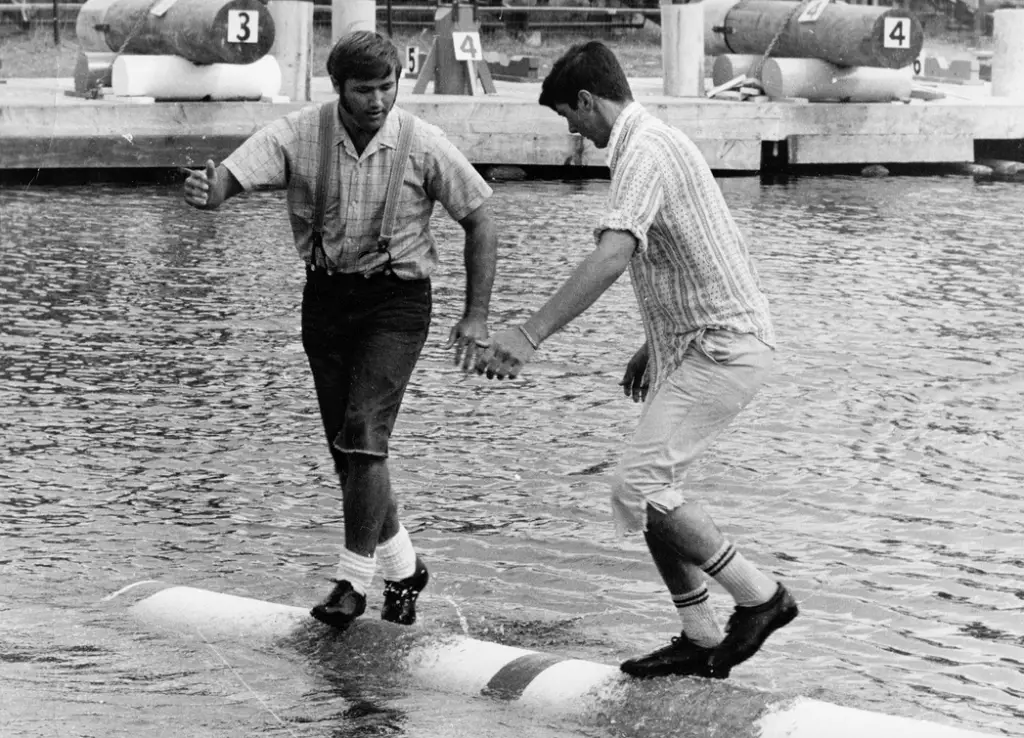
One of the most exciting—and most dangerous—playground features of the 1970s was the rolling log. Essentially a large metal or wooden cylinder mounted on a frame, this device allowed kids to test their balance by standing on top and trying to run in place without falling. The problem? The log rarely stayed under control. One moment you’d be balancing like a pro, and the next, you’d be sprawled out on the ground, arms and legs in every direction. If more than one kid hopped on at the same time, the game turned into an all-out battle to see who could stay on the longest.
These rolling logs weren’t just fun—they were a challenge that required skill, coordination, and a bit of recklessness. Kids loved competing to see who could last the longest, and wiping out was just part of the process. Today, playgrounds have largely done away with rolling logs, recognizing them as injury magnets. While modern play equipment is designed to be safer, it’s also a little less adventurous. Back then, you knew the risks and played anyway, because the thrill of mastering the rolling log was too good to pass up.
The 1970s playground was a land of adventure, scraped knees, and exhilarating danger. We played hard, got hurt, and learned resilience along the way. Today’s safer playgrounds have taken away many of the thrills that made those childhood days so memorable. Sure, we had our fair share of accidents, but we also had an unforgettable time pushing the limits. These risky activities were part of what made growing up in the ’70s so special. What do you remember from your playground days? Let’s hear your stories!


